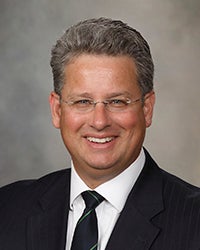Guest Column: Goal of hospice is to give best care possible
Published 4:38 pm Friday, November 23, 2018
Guest Column by Cory Ingram

Cory Ingram
In honor of the excellent team-based approach for caring for seriously ill community members, November is designated as our National Hospice and Palliative Care Month. Hospice and palliative care are team-based approaches to managing physical symptoms, providing emotional, spiritual and social support, and exploring the values and priorities of patients living with chronic serious illness. Hospice is most specifically for people in the last months of life, and palliative care is for people in the years prior to needing hospice. Each year in Minnesota, about 43,000 people die. Most all of them would benefit from hospice care. That also means in the next five years, over 200,000 people will die in Minnesota. Many of them may very well benefit from palliative care starting right now. Why? In a nutshell, hospice and palliative care improve the quality of life for patients and families.
Hospice and palliative care support you and your family in your day-to-day living by improving the experience of living with your illness. Hospice does focus your medical care differently than palliative care, which is provided right alongside your regular medical care. So how does that focus change with hospice? Perhaps that is best illustrated by the answer to the following question that helps identify when palliative care patients are interested in shifting the focus of their care to hospice. That question to patients and families is simply, “Given your current state of health and continued decline, how do you envision responding to the next crisis; i.e. the next pneumonia in advanced terminal lung cancer, for example?” If the answer is to return to the hospital, then palliative care is the right focus of care. If the answer is to be allowed to die naturally, peacefully and comfortably in the place where you live, then hospice is the correct focus. It is important that families talk about these topics so they are well prepared emotionally to make decisions, support one another and navigate the challenges associated with these situations.
Our teams of nurses, nurse aides, social workers, chaplains, volunteers, pharmacists and doctors value your support and partnership in caring for you and your loved ones who are dealing with the challenges of chronic serious illness and possibly the approaching end of life. Our team members enjoy seeing you and your loved ones in your home, assisted living, nursing home, clinic, and hospital. As a team, we meet together once a week and review each patient and family’s care needs and make improvements as needed. Our goal is always to ensure you and your loved ones receive the best care possible during these challenging times of life. In addition to our weekly care meeting, we also offer round-the-clock care coverage available in moments of crisis, such as increasing pain or shortness of breath. Care plan improvements can be made around the clock when needed. Grief support is also provided in our communities through our hospice. We are working across our practice to develop palliative care services through partnerships with our clinicians in Rochester, Austin and Albert Lea.
Our community hospices of Austin and Albert Lea thank community members for their dedicated support of our Mayo Clinic Health System Hospice through their volunteer work and donations of all shapes and sizes. This last year we had an Eagle Scout complete their Eagle project through making blankets for our patients. We appreciate your kind words of support and partnership in all our community-wide efforts.
Lastly, it is important that we emphasize that the benefits to the patient and family are not a one-way street. Our teams benefit from being welcomed into and making a positive difference in the lives of the community members for which we have the privilege of caring.
Cory Ingram is medical director of hospice and palliative care in southeast Minnesota for Mayo Clinic.

